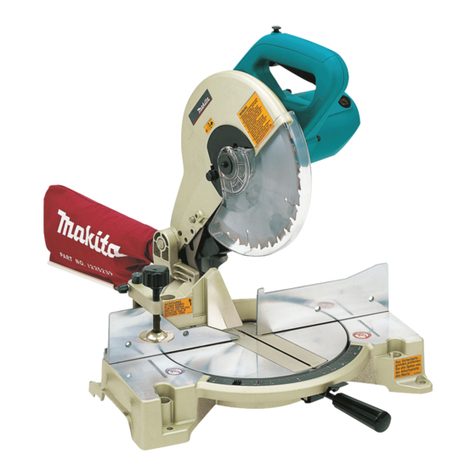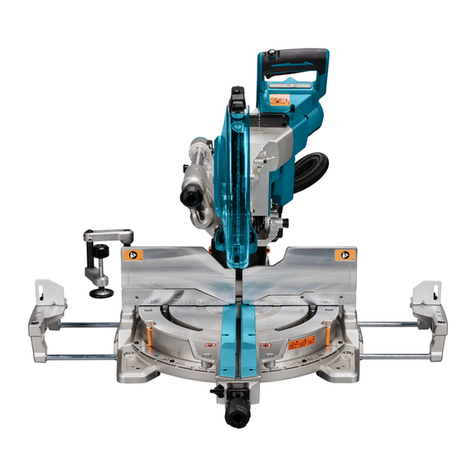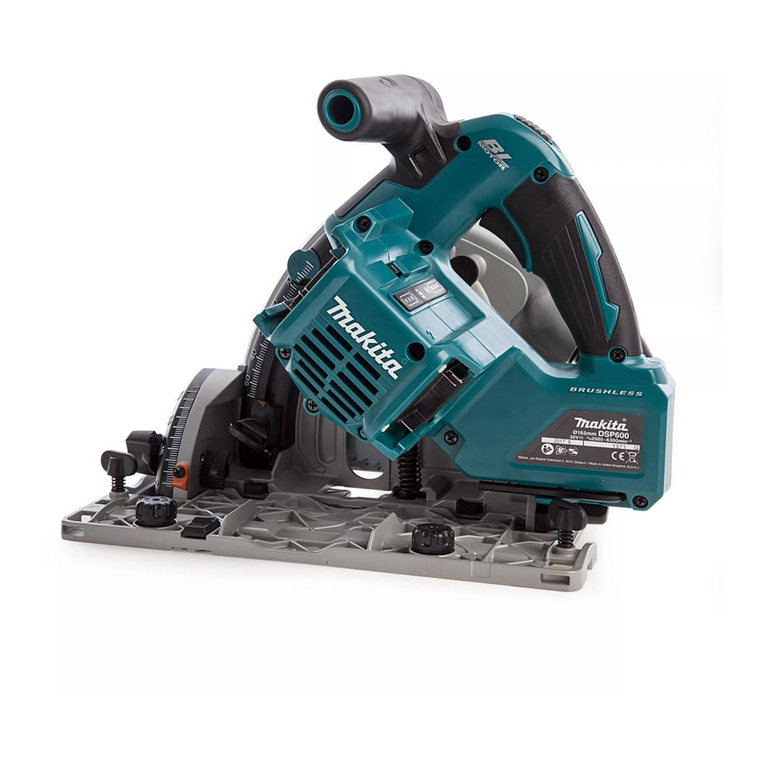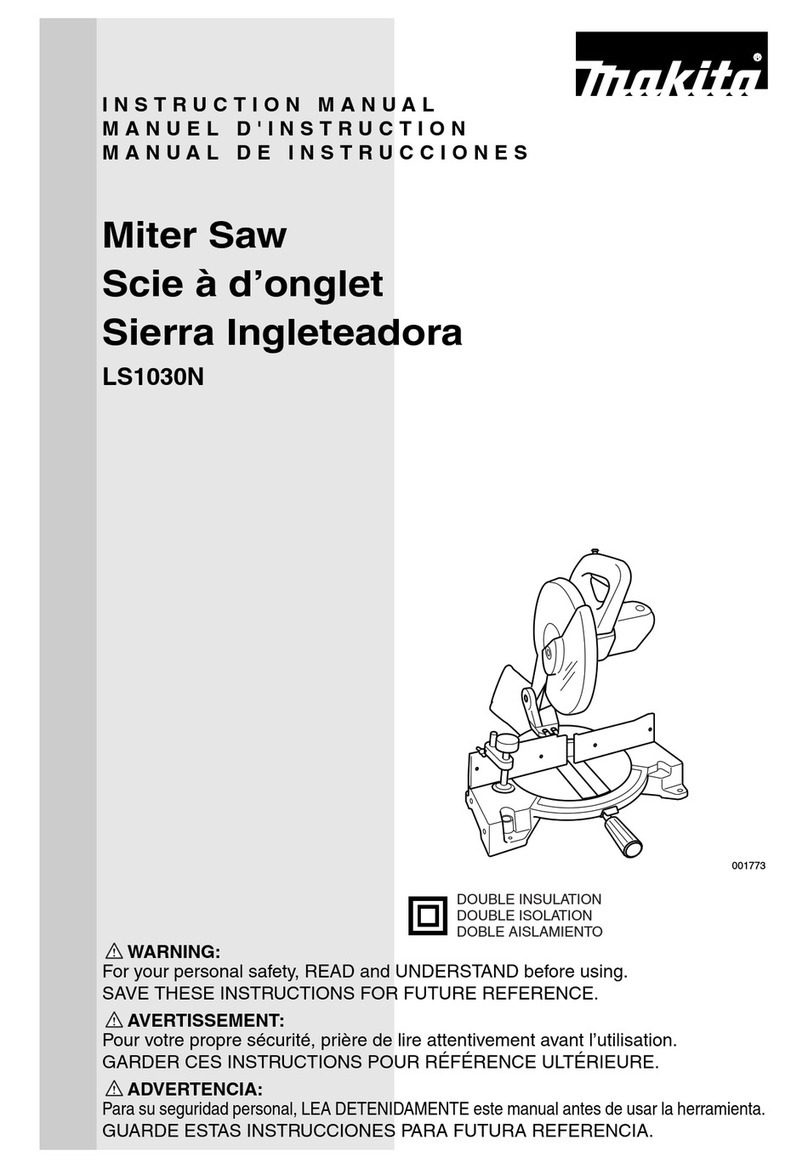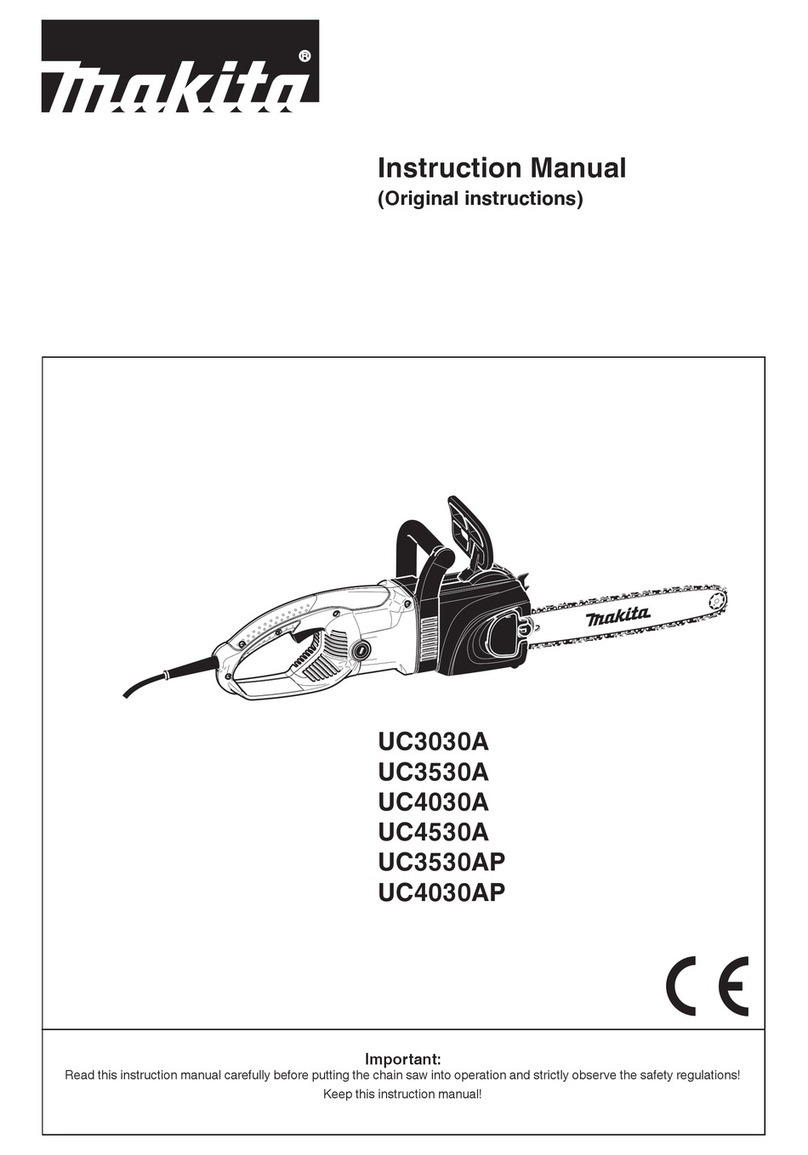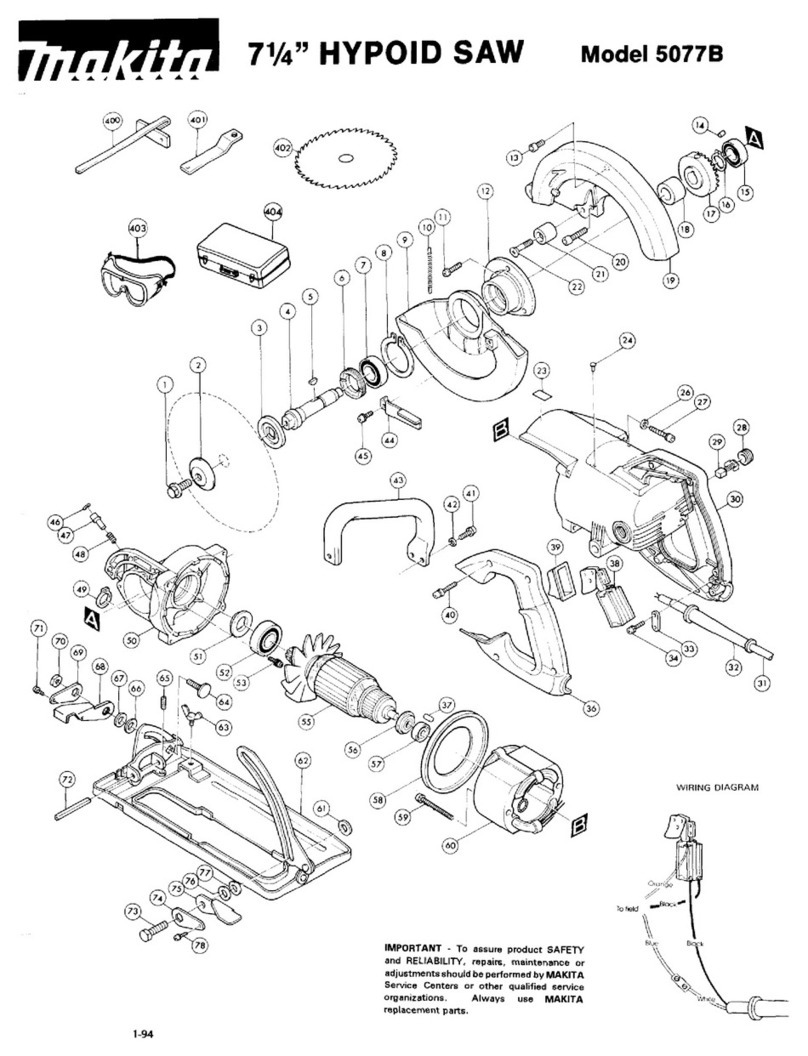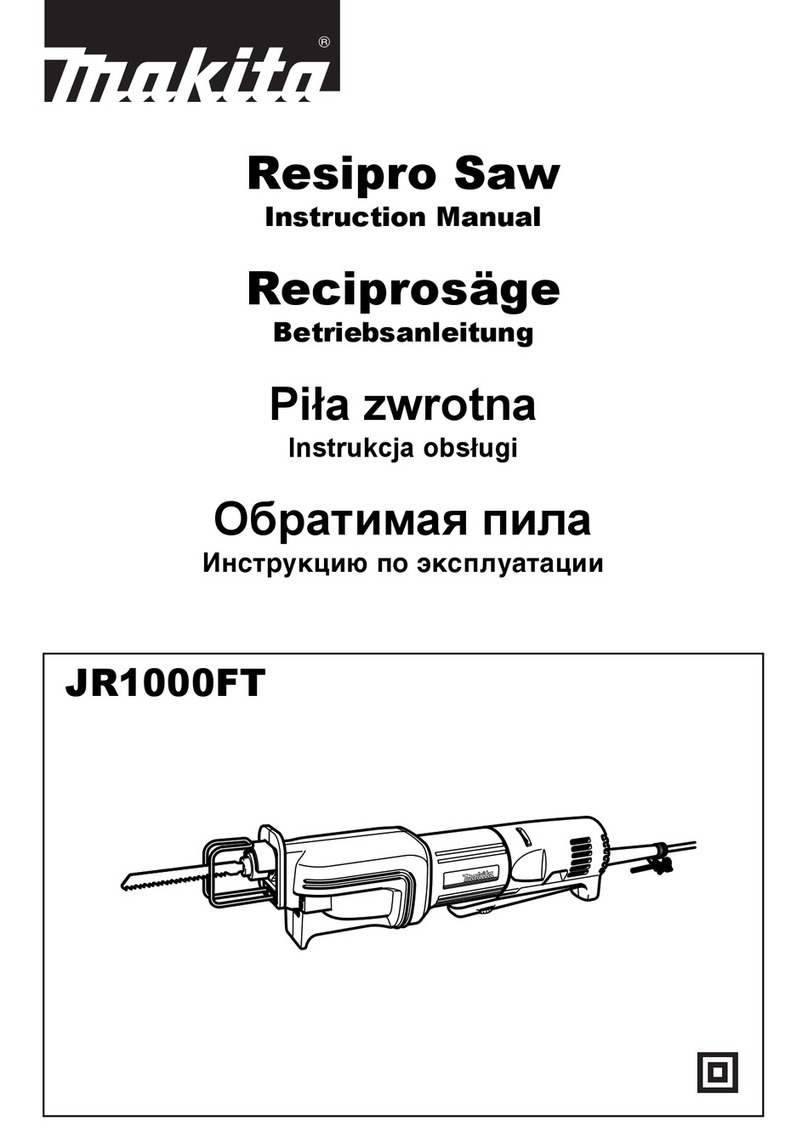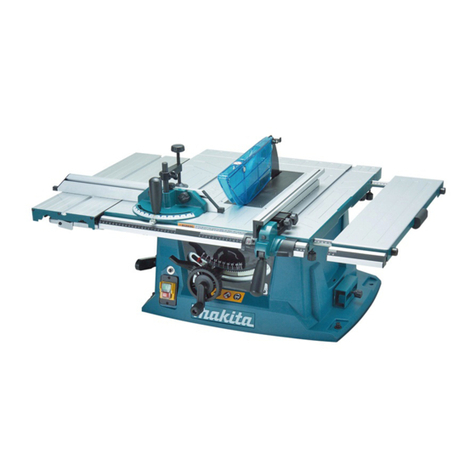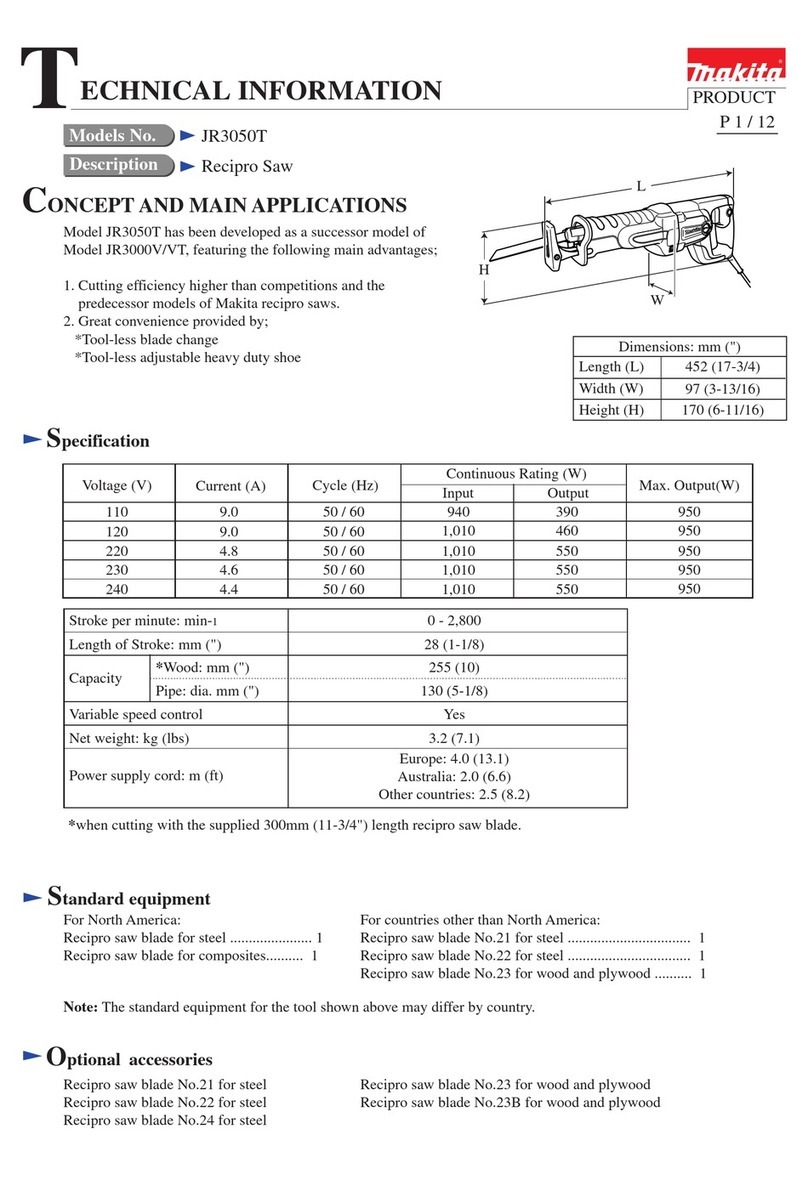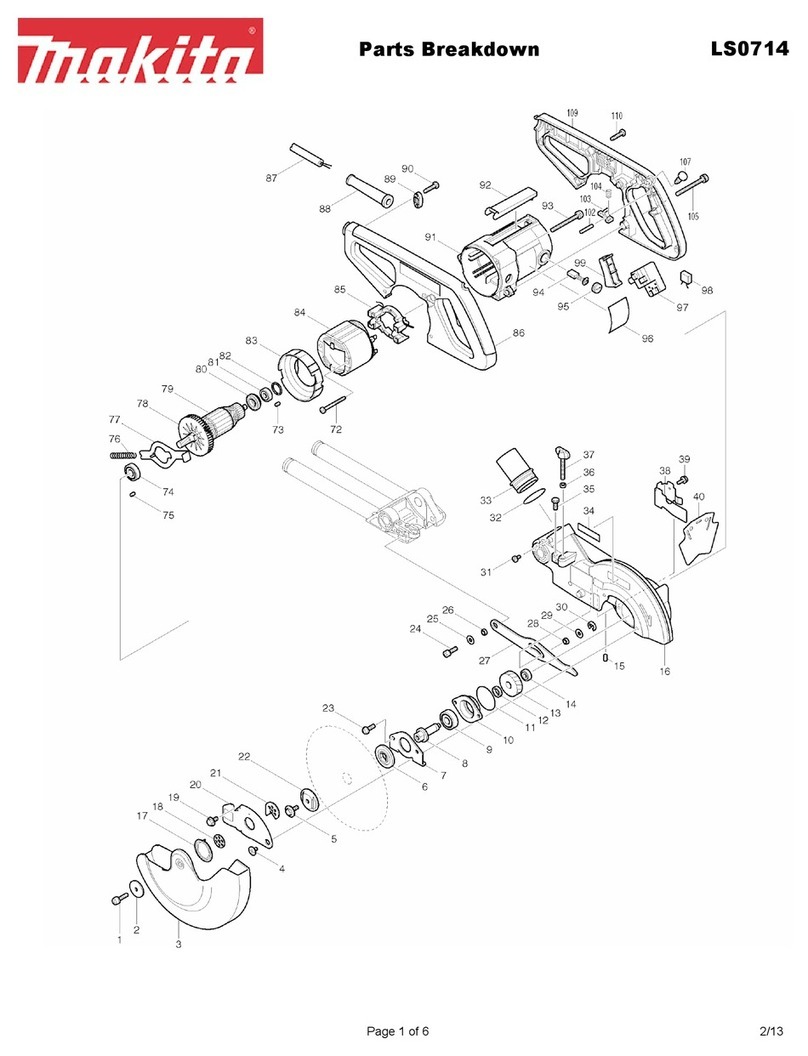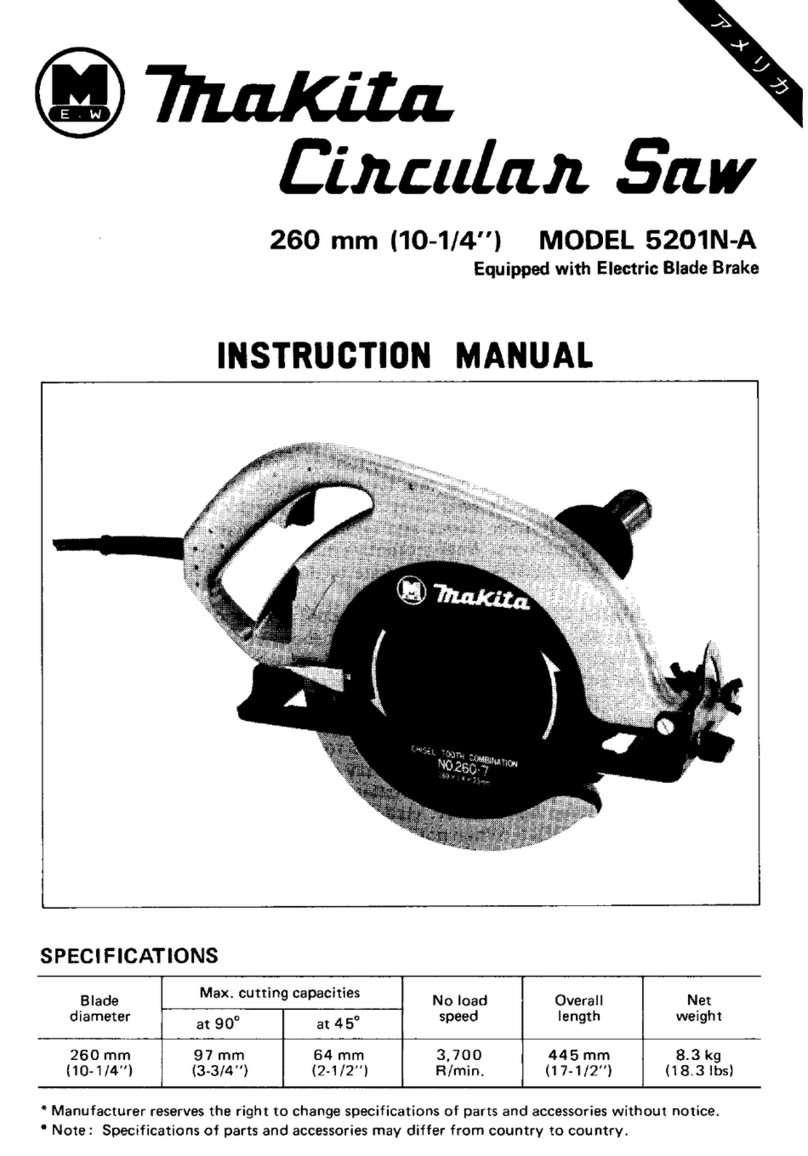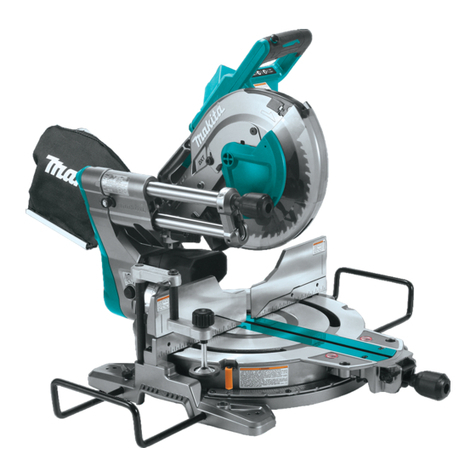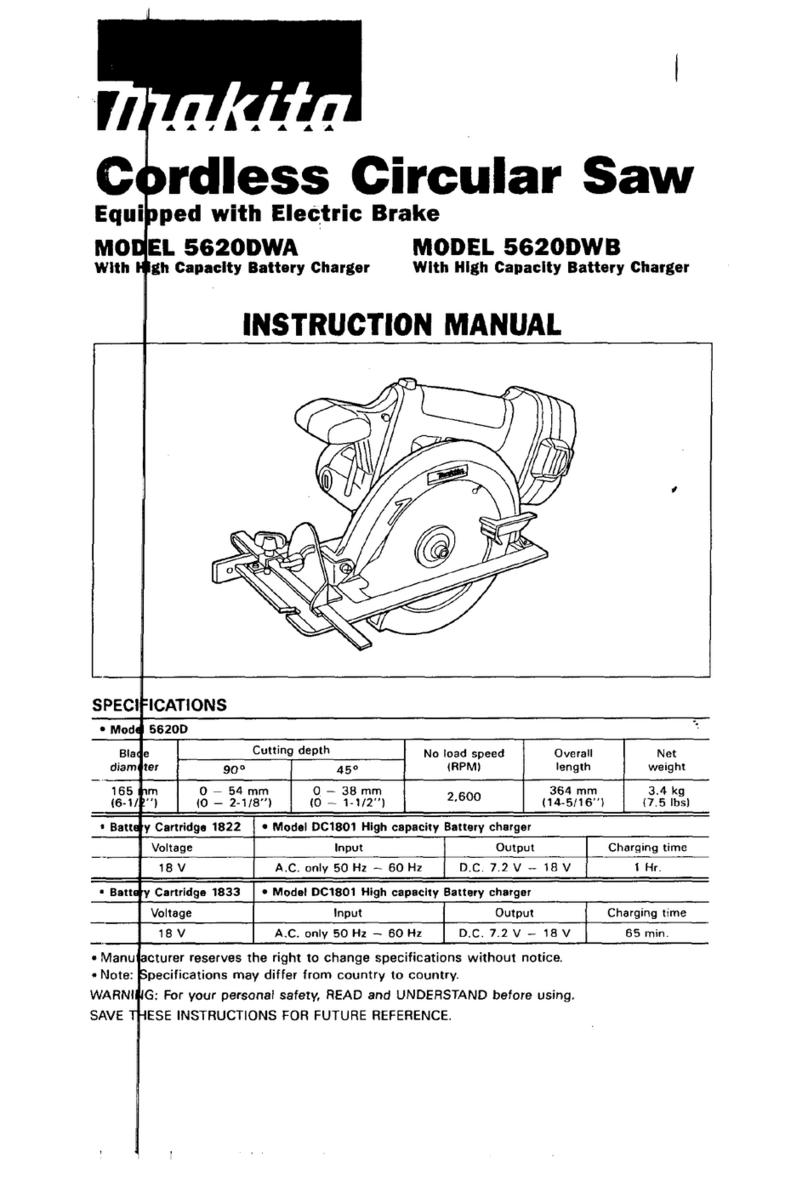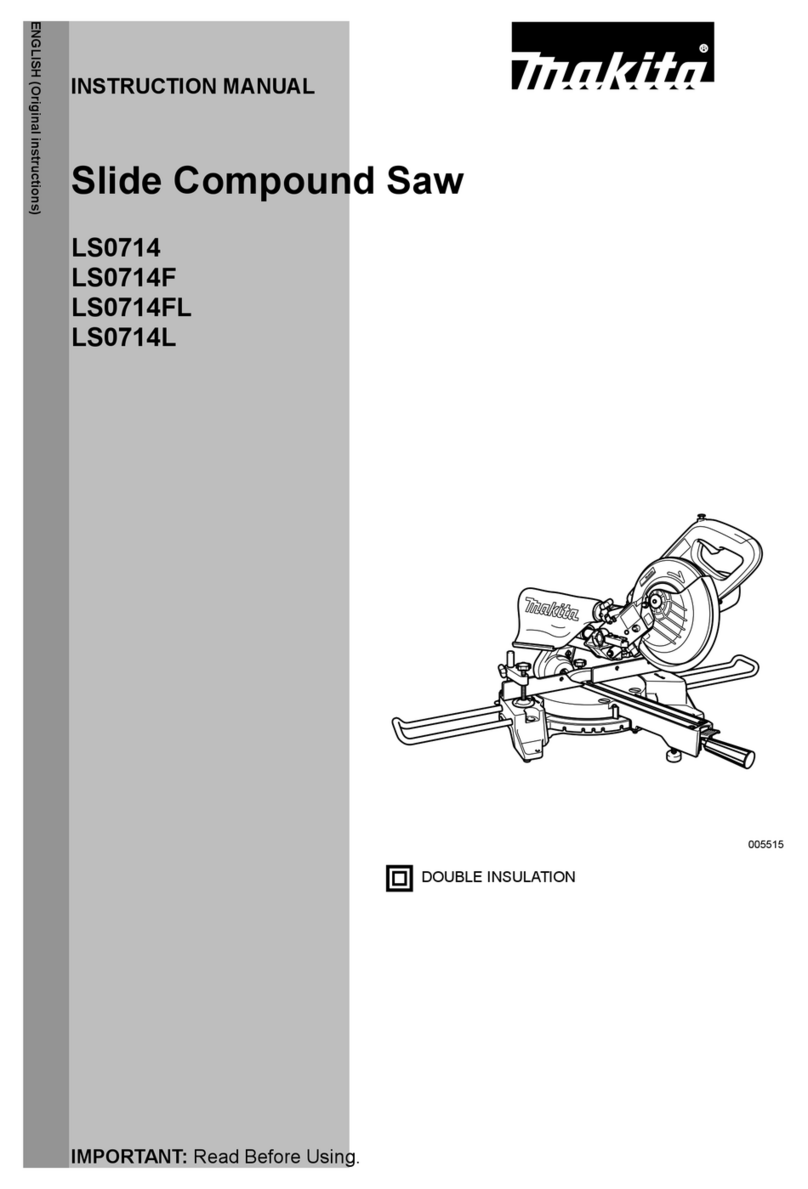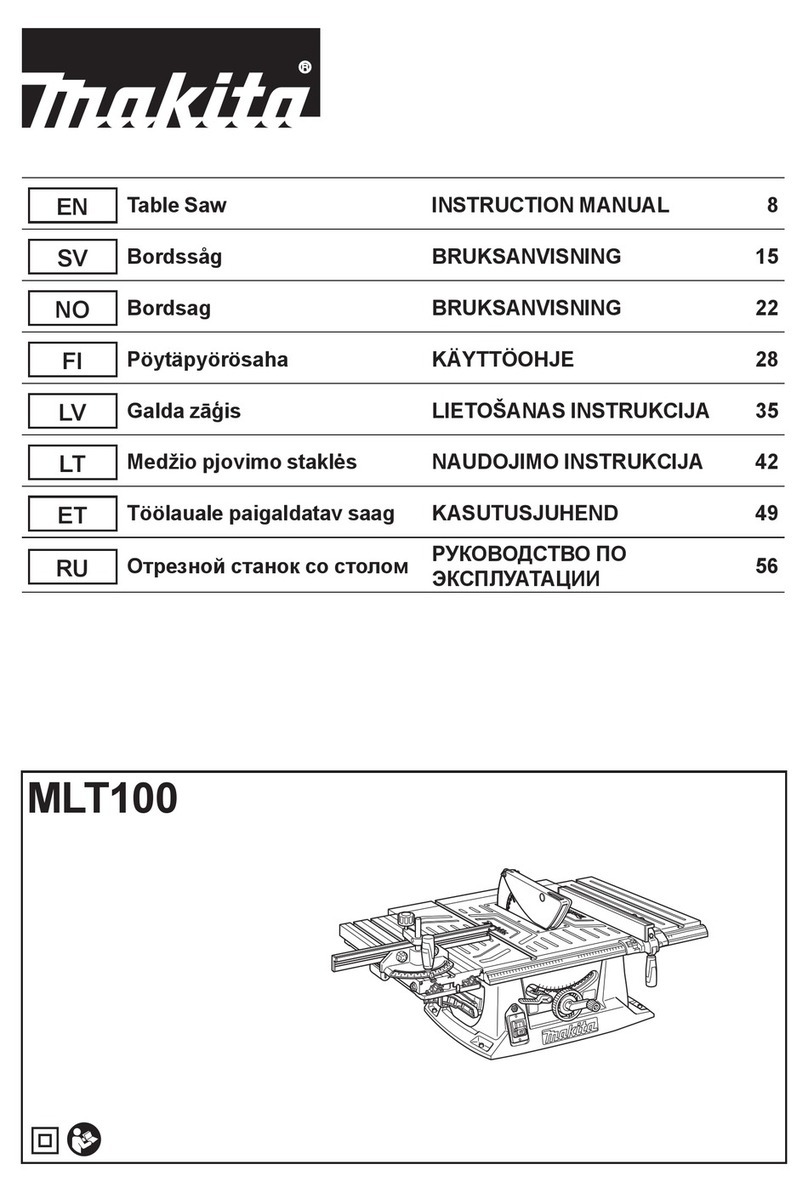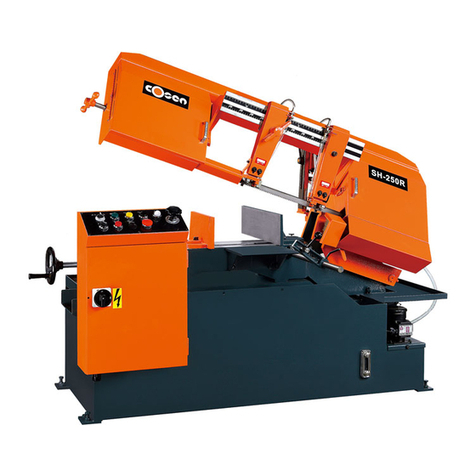
10 ENGLISH
ENGLISH (Original instructions)
SPECIFICATIONS
Model: SP001G
Blade diameter 165 mm
Max. Cutting
depth
at 0° 56 mm
at 45° bevel 40 mm
at 48° bevel 38 mm
No load speed 2,500 - 4,900 min-1
Overall length (with BL4040) 375 mm
Rated voltage D.C. 36 V - 40 V max
Net weight 4.4 - 5.0 kg
• Duetoourcontinuingprogramofresearchanddevelopment,thespecicationshereinaresubjecttochange
without notice.
• Specicationsandbatterycartridgemaydierfromcountrytocountry.
• Theweightmaydierdependingontheattachment(s),includingthebatterycartridge.Thelightestandheavi-
est combinations, according to EPTA-Procedure 01/2014, are shown in the table.
Applicable battery cartridge and charger
Batterycartridge BL4020/BL4025*/BL4040*/BL4050F*
*:Recommendedbattery
Charger DC40RA / DC40RB / DC40RC
• Someofthebatterycartridgesandchargerslistedabovemaynotbeavailabledependingonyourregionof
residence.
WARNING: Only use the battery cartridges and chargers listed above.Useofanyotherbatterycartridges
andchargersmaycauseinjuryand/orre.
Symbols
Thefollowingsshowthesymbolswhichmaybeused
fortheequipment.Besurethatyouunderstandtheir
meaning before use.
Read instruction manual.
Wearsafetyglasses.
Li-ion
OnlyforEUcountries
Due to the presence of hazardous com-
ponents in the equipment, waste electrical
and electronic equipment, accumulators
andbatteriesmayhaveanegativeimpact
on the environment and human health.
Do not dispose of electrical and electronic
appliances or batteries with household
waste!
In accordance with the European Directive
on waste electrical and electronic equip-
ment and on accumulators and batteries
and waste accumulators and batteries,
as well as their adaptation to national law,
waste electrical equipment, batteries and
accumulatorsshouldbestoredseparately
and delivered to a separate collection point
for municipal waste, operating in accor-
dance with the regulations on environmen-
tal protection.
Thisisindicatedbythesymbolofthe
crossed-out wheeled bin placed on the
equipment.
Intended use
Thetoolisspeciallyintendedforperformingplunge
cuts. The tool is also intended for rip and cross cuts in
wood. If the tool is equipped with proper circular saw
blade, the tool can be used for sawing aluminum, plas-
tic, mineral contained plastic, and similar materials.
